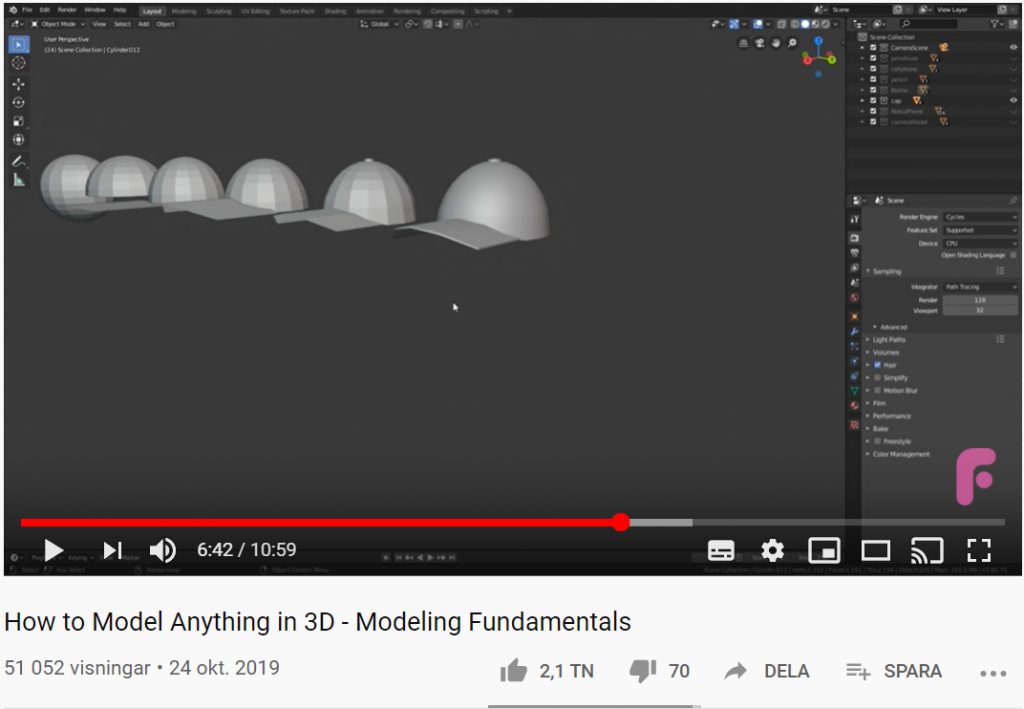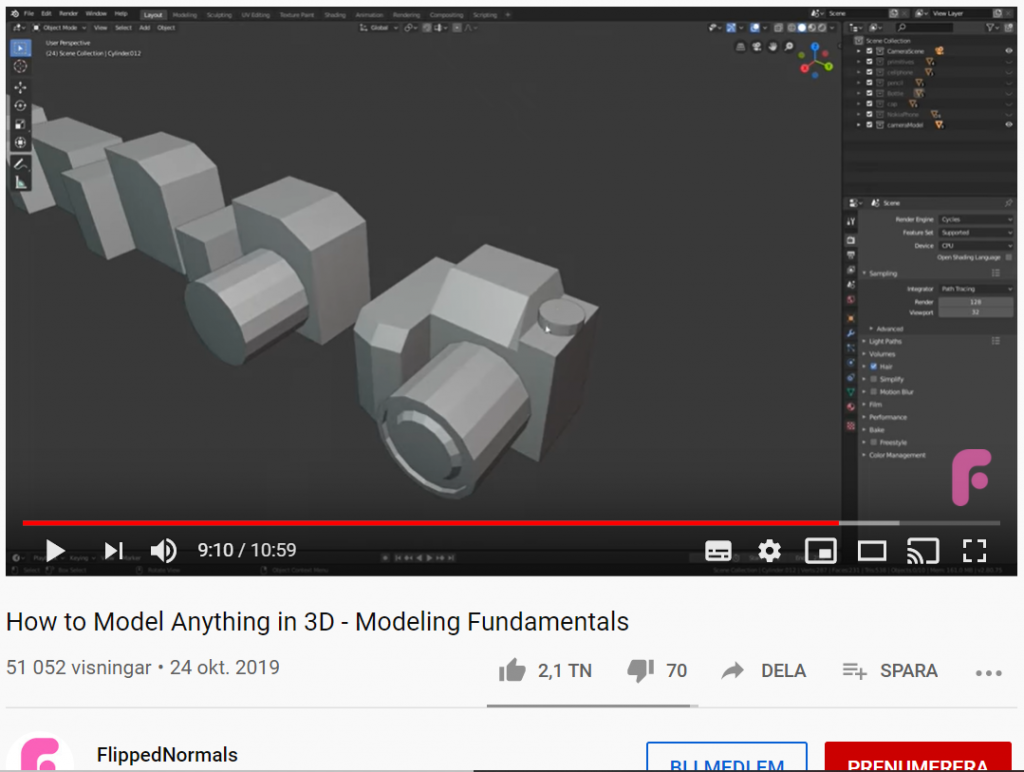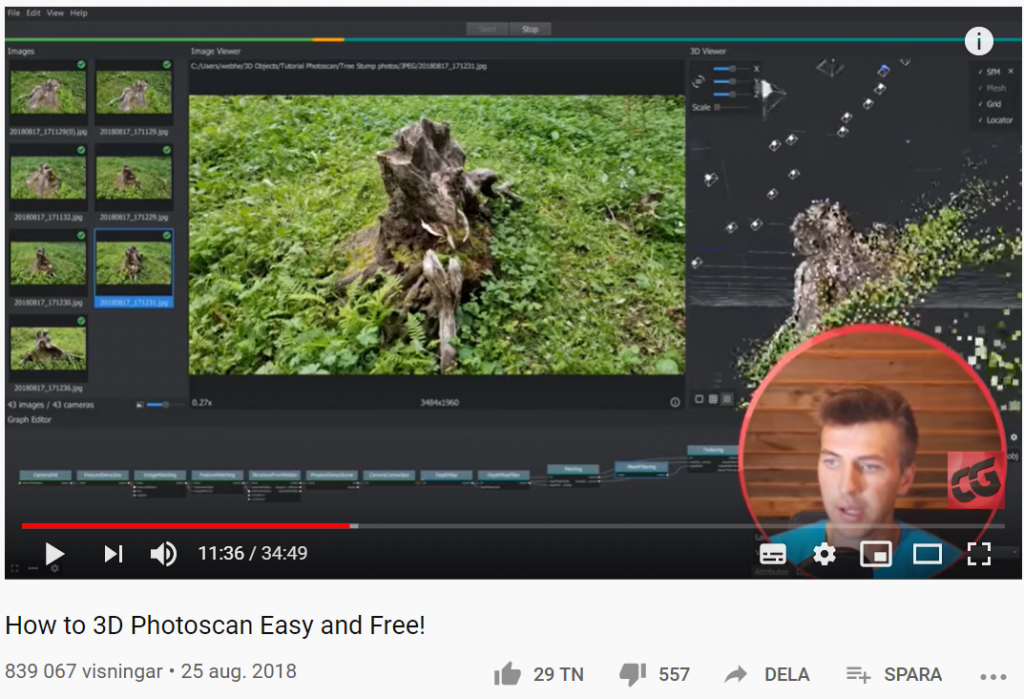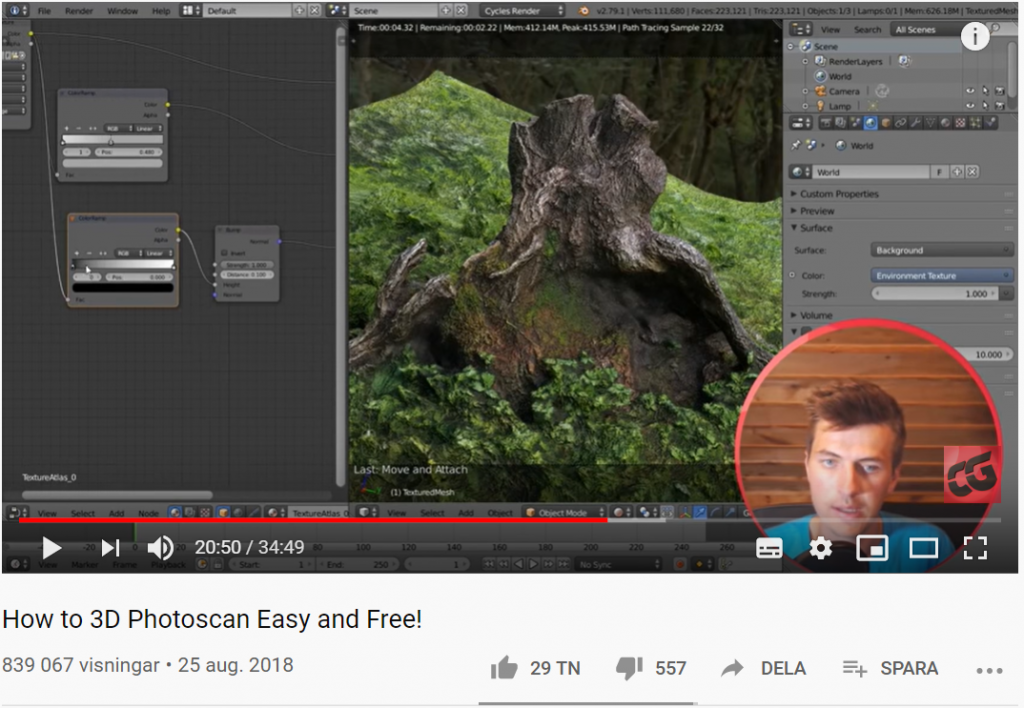Blender 2.8 Facial motion capture tutorial
In this blender 2.8 tutorial by CGMatter we go over how we can use blender as a free facial motion capture solution. Track facial performance using just tracking markers and blender!
Etikett: Blender
Motion tracking med Blender 2.8
In this blender 2.8 tutorial, by CGMatter (https://www.cgmatter.com), we go over the fundamentals of motion tracking inside blender. Specifically we go over image sequence conversion and the motion models (location, rotation, scale, affine, perspective) used for tracking.
This is the first part of a 3 part tutorial series covering everything to do with motion tracking.
TIMESTAMPS: 00:00:00 – Introduction
00:01:18 – What is motion tracking?
00:01:55 -Image sequences (theory + conversion)
00:08:33 – Switching to movie clip editor
00:10:05 – Setting up
00:11:46 – Location tracking (and some basics)
00:16:43 – Tracking panel (track speed, frames limit, etc)
00:19:16 – Search area and pattern area (optimization)
00:22:20 – Default settings vs local settings
00:23:03 – Modifying the pattern area
00:24:33 – Graphs (how to interpret X and Y data)
00:26:10 – Link empty to track
00:27:33 – Basic 3d integration
00:28:37 – Location rotation motion model (+ comparing to location model)
00:33:10 – What a tracker really stores
00:33:58 – 2 point tracking (for rotation/scaling data)
00:39:20 – Normalize
00:42:16 – Location rotation scale motion model
00:46:17 – Previous frame vs keyframe (match mode)
00:48:47 – Correlation (with a small mistake :D)
00:53:03 – Affine motion model
01:00:19 – Perspective motion model
01:13:03 – RGB color channels
01:15:10 – Closing thoughts + sneak-peek
Blender 2.8 Motion tracking #2: Even more to go over (tutorial)
In this blender 2.8 tutorial we continue developing the theory of motion tracking by going over techniques like join tracks and offset tracking. We also talk about applications like masking, plane tracks, stabilization, and compositing. TIMESTAMPS:
00:00:00 – Introduction (what we’ll go over)
00:01:11 – Setup 00:02:35 – Obstructions (join tracks)
00:08:23 – Offset tracking
00:14:52 – Stabilization (lot’s of stuff in here) – multiple trackers – stab weight – rotation/scale
00:23:21 – Color coding
00:24:36 – More stabilization – autoscale – anchor frame
00:26:51 – Compositing (stabilize 2d node)
00:32:32 – Rendering stabilized result
00:35:23 – Plane track
00:42:30 – Compositing (plane track deform node) – masking – dilate/erode node
00:49:44 – Manual hook approach
00:57:12 – Masking
01:00:16 – Mask node (compositing)
01:01:37 – Overview + sneak-peek
Blender 2.8 Motion tracking #3: Camera tracking in depth (tutorial)
In this blender 2.8 tutorial we finally go over camera tracking and the theory involved in reducing your solve error. We also talk about orientation and compositing which lets us put 3d objects in our scene.
Blender 2.8 Motion tracking #4: Camera tracking examples (tutorial)
In this blender 2.8 tutorial we review what we’ve learned about camera tracking. Specifically we try to get a good camera solve on two new shots one of which is a tripod shot.
Grunderna i 3D-modellering
I denna tutorial får du lära dig en metod för att modellera nästan vad som helst i 3D. När du ska skissa, rita eller 3D-modellera ett objekt kan du kombinera och förändra de fyra grundformerna plan, kub, sfär och cylinder. I filmklippet används programvaran Blender, men samma principer gäller för alla 3D-programvaror.






3D fotogrammetri med Meshroom och Blender
Lär dig hur du 3D-scannar genom att ta mängder av foton med din mobilkamera, importera bilderna i programvaran Meshroom (a free open-source 3D Reconstruction Photogrammetry Software based on the AliceVision framework), och sedan justera, ljussätta och rendera 3D-modellen i Blender för att skapa en fotorealistisk 3D-modell av det du fotograferat av.

